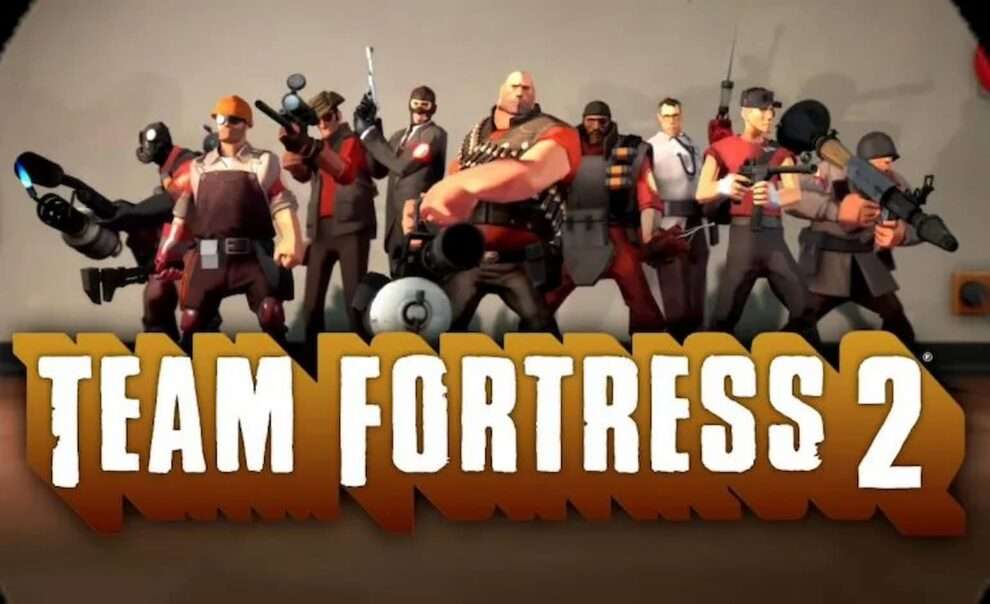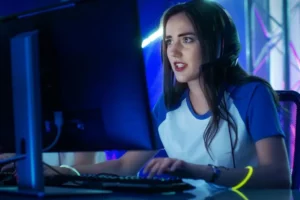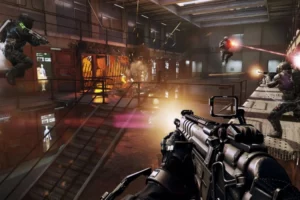Valve Corporation has taken an unprecedented step by releasing the full client and server code of its iconic multiplayer shooter, Team Fortress 2 (TF2), to the public. The move invites fans to “change, extend, or rewrite” the game in any non-commercial manner they see fit. This bold gesture not only underscores Valve’s commitment to fostering community engagement but also highlights the enduring legacy of a title that has captivated players for over a decade.
Since its release in 2007 as part of The Orange Box , Team Fortress 2 has remained a staple in the competitive multiplayer landscape. Known for its cartoonish art style, witty humor, and deep tactical gameplay, the game has cultivated a passionate fanbase that continues to thrive even after all these years. By handing over the game’s source code, Valve is effectively empowering this community to take ownership of their beloved title, opening up endless possibilities for innovation and creativity.
A New Era for TF2
Releasing the source code of a game is no small feat—it requires trust, confidence, and a willingness to let go of control. For Valve, this decision aligns with its long-standing philosophy of encouraging player-driven content and experimentation. Over the years, the company has consistently demonstrated its support for modding communities through platforms like Steam Workshop and tools such as Source Filmmaker. However, giving fans access to the entire codebase represents a significant escalation in this approach.
According to Valve’s announcement, the released code includes both the client-side and server-side components of Team Fortress 2 . This means developers can now tinker with everything from character models and animations to core gameplay mechanics and network systems. While the license explicitly prohibits commercial use, it places virtually no other restrictions on what creators can do. Whether it’s tweaking existing features, adding new classes or weapons, or building entirely original modes, the potential for customization is virtually limitless.
This level of freedom is particularly exciting given the rich history of modding within the gaming industry. Titles like Half-Life and Quake owe much of their longevity to vibrant modding scenes, which produced groundbreaking creations such as Counter-Strike and Team Fortress Classic. By following in these footsteps, Valve is positioning Team Fortress 2 as a fertile ground for the next generation of creative minds.
Why Now?
The timing of this announcement raises interesting questions about Valve’s motivations. On one hand, it could be seen as a way to reinvigorate interest in Team Fortress 2 , which, despite its enduring popularity, has seen declining player numbers compared to its peak years. By entrusting the community with the tools to shape the game’s future, Valve may hope to reignite enthusiasm among existing players while attracting new ones who are eager to explore its potential.
On the other hand, this move might reflect broader changes at Valve itself. Recent years have seen the company shift focus toward projects like the Steam Deck, VR initiatives, and experimental endeavors such as Artifact and Cardinal Sixty-Two. With fewer resources dedicated to maintaining older titles, outsourcing development responsibilities to the community becomes an attractive option. It allows Valve to continue supporting Team Fortress 2 indirectly while freeing up internal teams to pursue other ventures.
Regardless of the reasoning, the decision speaks volumes about Valve’s relationship with its audience. Rather than treating players as mere consumers, the company views them as collaborators—partners in the ongoing evolution of its games. This ethos has been central to Valve’s success and remains a key differentiator in an increasingly corporate-driven industry.
What Does This Mean for Fans?
For fans of Team Fortress 2 , the implications of this announcement are profound. At its most basic level, it provides a treasure trove of learning opportunities for aspiring developers. Exploring the inner workings of a polished AAA game offers invaluable insights into design principles, programming techniques, and optimization strategies. For many, this kind of hands-on experience serves as a stepping stone to professional careers in the gaming industry.
Beyond education, the release of the source code opens the door to ambitious projects that were previously unimaginable. Custom maps, balance adjustments, and cosmetic tweaks have always been staples of the TF2 community, but now enthusiasts can delve deeper into the game’s architecture. Imagine new game modes that fundamentally alter how matches unfold, or entirely reimagined visual styles that breathe fresh life into familiar environments. These possibilities, once constrained by technical limitations, are now within reach.
Of course, creating meaningful changes will require time, effort, and collaboration. Not every idea will come to fruition, and some experiments may fail spectacularly. But failure is an inherent part of the creative process, and the beauty of open-source development lies in its ability to foster collective problem-solving. As individual efforts coalesce into shared knowledge, the community stands to benefit as a whole.
Challenges Ahead
While the prospects are undeniably exciting, challenges abound for those hoping to make their mark on Team Fortress 2 . First and foremost is the complexity of the codebase itself. Even experienced developers may find themselves overwhelmed by the intricacies of a large-scale multiplayer game engine. Documentation and community support will play crucial roles in smoothing the transition for newcomers.
Another hurdle is ensuring compatibility between custom modifications and the official version of the game. Without proper safeguards, fragmented versions of TF2 could lead to confusion and fragmentation among players. To mitigate this risk, Valve may need to provide guidelines or tools that promote standardization without stifling creativity.
Finally, there’s the issue of sustainability. Maintaining active projects over extended periods demands dedication and coordination, qualities that aren’t always easy to sustain in volunteer-driven initiatives. Successful endeavors will likely rely on strong leadership and clear communication channels to keep contributors aligned and motivated.
Despite these obstacles, the energy surrounding this initiative is palpable. Forums and social media platforms buzz with discussions about potential applications of the newly available code. From minor quality-of-life improvements to sweeping overhauls, the range of ideas being proposed reflects the diversity and passion of the TF2 community.
As fans begin exploring the depths of Team Fortress 2 ‘s code, one thing is certain: the game’s future looks brighter than ever. By relinquishing control to its community, Valve has set the stage for a new chapter in the life of this iconic title. Whether through incremental enhancements or radical reinventions, the innovations born from this collaboration promise to enrich the experience for everyone involved.
For Valve, this act of faith reinforces its reputation as a forward-thinking company unafraid to challenge conventions. In an era where proprietary control often takes precedence, the decision to share Team Fortress 2 ‘s secrets serves as a powerful reminder of the transformative power of openness and collaboration. As the community rises to meet this challenge, the world watches eagerly to see what wonders will emerge from the imaginations of its players.
Ultimately, this moment belongs to the fans—the dreamers, tinkerers, and visionaries who have kept Team Fortress 2 alive for so long. Armed with the tools to shape its destiny, they stand poised to write the next great chapter in its storied history. The only question left unanswered is: what will they create?
















Add Comment